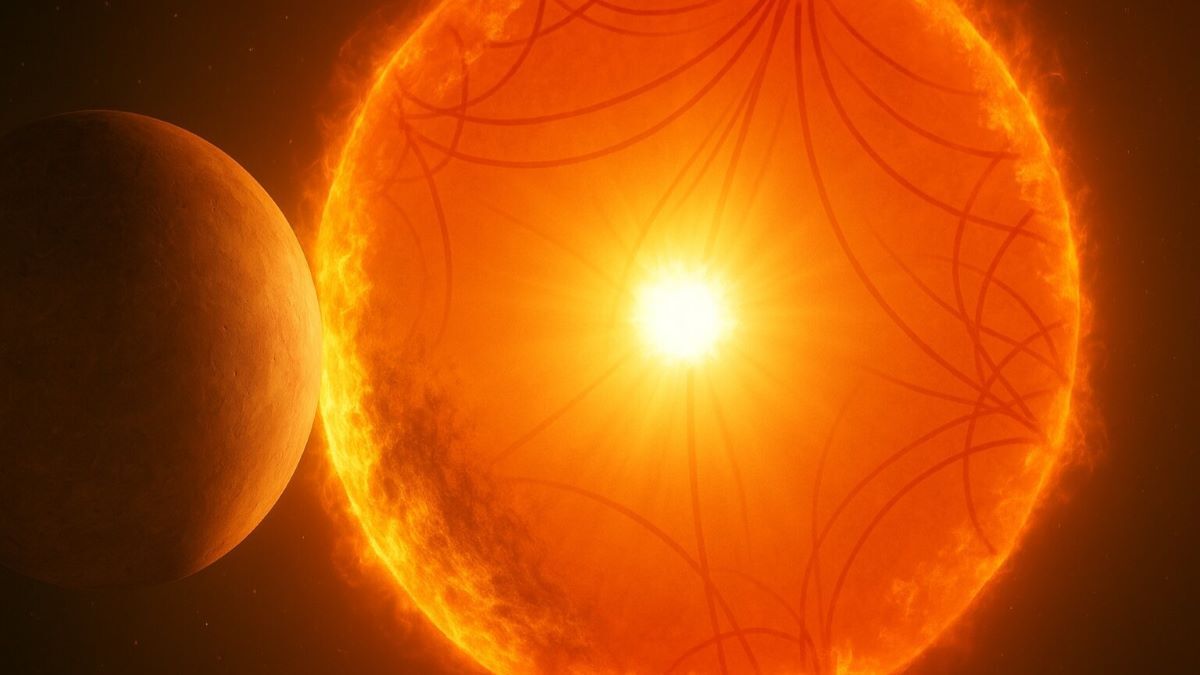13.05.2025
Astronomers have managed to peer inside a nearby star by “listening” to its resonance. What they discovered changes astronomers’ understanding of how stars work.
Stars don’t make a noise that you can hear, but they do have natural resonant frequencies that can be detected using the right tools. Similar technology has helped geologists on Earth understand the layers and what is happening in the interior of our planet.
A study published in the Astrophysical Journal opens a new window into investigations of stars through this stellar music.

Artist’s concept of the HD219134 system with resonant waves inside it. Credit: Gabriel Perez Diaz/Instituto de Astrofísica de Canarias/W. M. Keck Observatory.
“The vibrations of a star are like its unique song,” says lead author Yaguang Li, a researcher at the University of Hawai‘i at Mānoa. “By listening to those oscillations, we can precisely determine how massive a star is, how large it is, and how old it is.”
Stellar songs have been heard before using a technique known as astroseismology. But these have only been recorded for very hot stars and it was thought that the oscillations of smaller stars were too subtle to be picked up – until now.
Astronomers at the Keck Observatory on the Hawai‘ian island Maunakea trained the instrument on the cool, orange star HD 219134. At just 21 light-years from our solar system, the star is a stellar neighbour of our Sun.
The Keck Planet Finder (KPF) is mainly used for discovering exoplanets around other stars. But this sensitive instrument is also able to measure the slight motion of a star’s surface toward and away from the observer.
“KPF’s fast readout mode makes it perfectly suited for detecting oscillations in cool stars,” Li adds.
Over 4 consecutive nights, KPF collected more than 2,000 precise velocity measurements from the star.
The measurements helped the astronomers determine that HD 219134 is 10.2 billion years old – more than twice the age of our Sun. It is one of the oldest stars aged using astroseismology.
This is important because other techniques to work out the age of stars don’t work as stars get older.
One method relies on measuring the spin of stars. Young stars spin faster. But the slowdown of a star’s spin seems to reduce over time, making it impossible to reliably age older stars. Now, astroseismology presents a new method.
“This is like finding a long-lost tuning fork for stellar clocks,” says Li. “It gives us a reference point to calibrate how stars spin down over billions of years.”
The team also found that, according to their measurements, HD 219134 is about 4% smaller than other measurements. It might mean that cooler stars don’t fit the same models used to estimate the size of hotter stars.
HD 219134 is also host to at least 5 planets, 2 of which are rocky worlds larger than Earth.
More precise measurements of the star’s characteristics will help astronomers understand these worlds better as well.
Quelle: COSMOS
